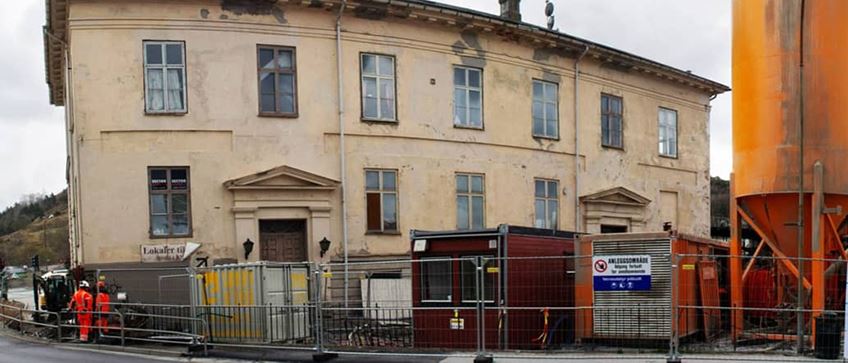The Tapiola swimming pool renovation and extension, Espoo
- Infra
- Earth and foundation engineering
- 2896 views
Rebuilding the Kongegården's foundation in Norway
We used pile jetting in foundation project under a listed historical house in Norway.

Kongegården building in Halden, Norway, was completed in 1820. It has stood for nearly 200 years on timber piles, but in recent years, the river and traffic around it have caused serious settling damage.
Old wooden piles and unstable loads were replaced by jetted piles going seven meters deep into the hillside.
This method can be used in almost anywhere it is necessary to reinforce a foundation, quickly and without damaging the building in the process. It is especially useful when building on old construction in city-centre density. Even while the work is being carried out, the building is being used for housing and business. Although the residents and other users obviously notice that the work is taking place, there is less noise and vibration than with other foundation methods.
Stronger piles
Rebuilding the foundation with jetted piles is not very common in Norway yet, but it is expected to grow. The unique thing about this method is that it needs very little space to do a lot of work. In this project we used a rig that we can get through a 70 cm wide door and can work in places with a ceiling of well under 2 meters.
The method itself consists of drilling into the ground and eroding away the old foundation, wood chips, etc. from the slope under the building. The hole is then filled with a 50/50 mixture of water and cement, flushed through a high pressure nozzle. Clay, stone, etc. in the ground basically mix with the cement, and the pillars harden like that. The piles go to around 6-7 meters below ground level and have a diameter of 2.2 meters at the bottom and 1.8 meters at the top. About 80–90 cm of a pile is thus under the foundation wall, bearing its weight. Around 90 such piles in all were placed under Kongegården.
We also worked systematically to ensure the least possible imprint in environment. We hung a silk curtain along the entire quay and river bank, to prevent massive outflow into the salmon run river which flows right past the building. We did not use any chemicals in the work, and all of the sludge was filtered and shipped to landfill.
Details
- Project name
- Kongegården
- Customer
- Regional office for historic monuments
- City
- Halden
- Country
- Norway
- Year
- 2017
- Project status
- Completed
YIT has ended all operations in Norway in 2023.








